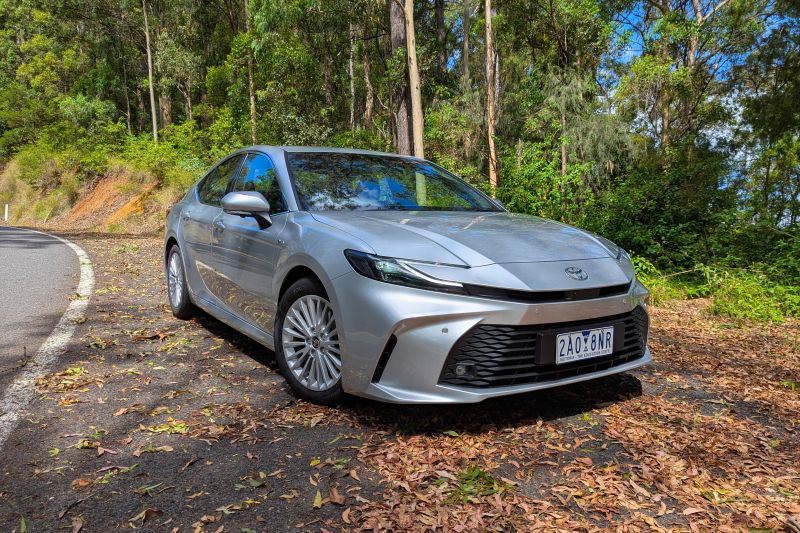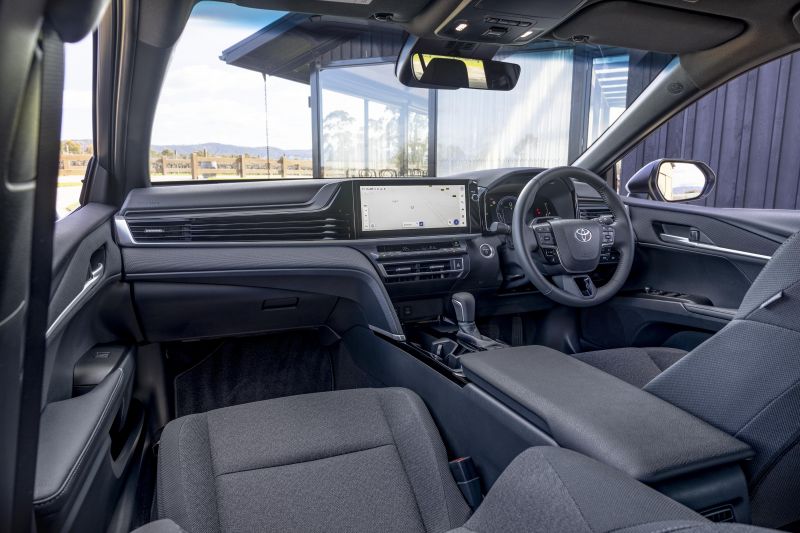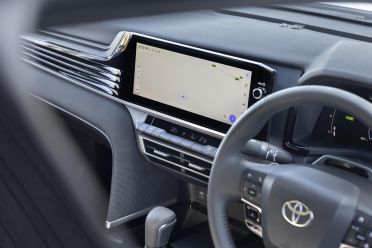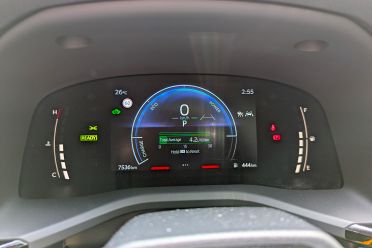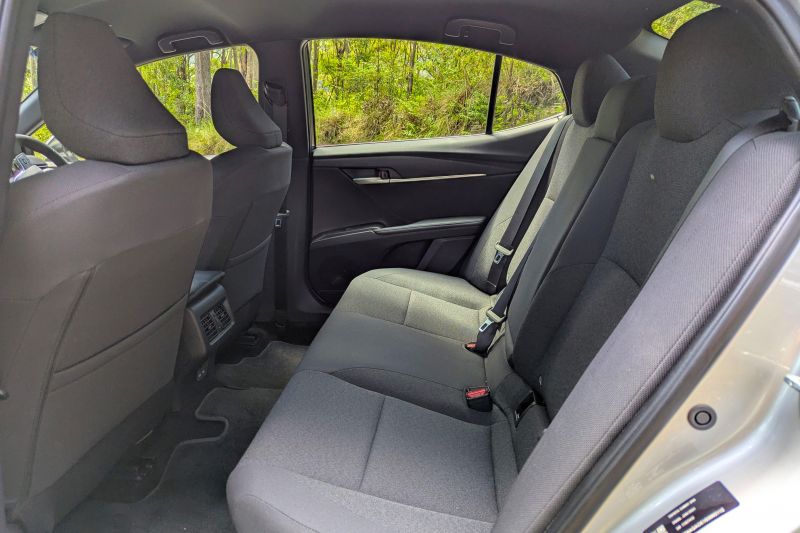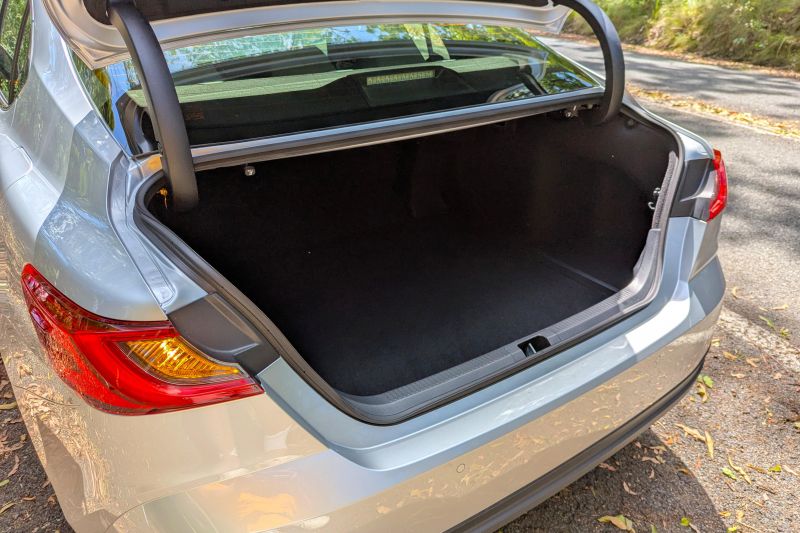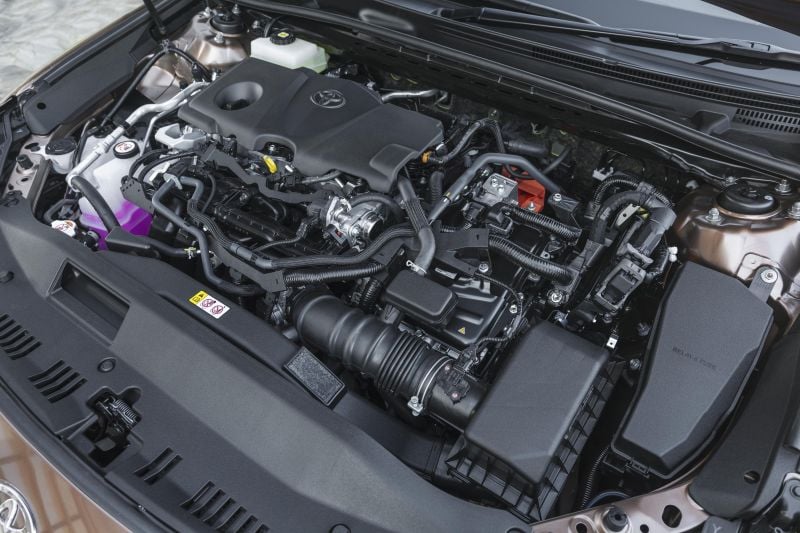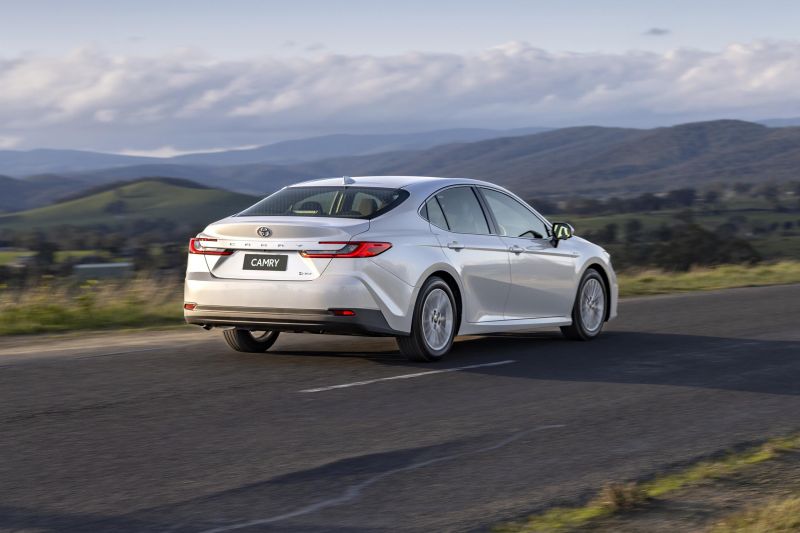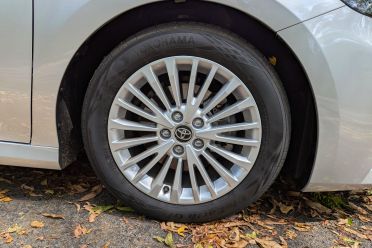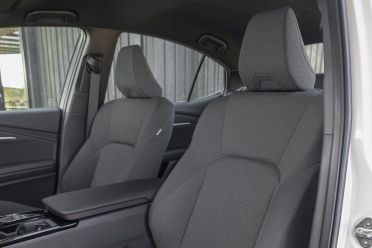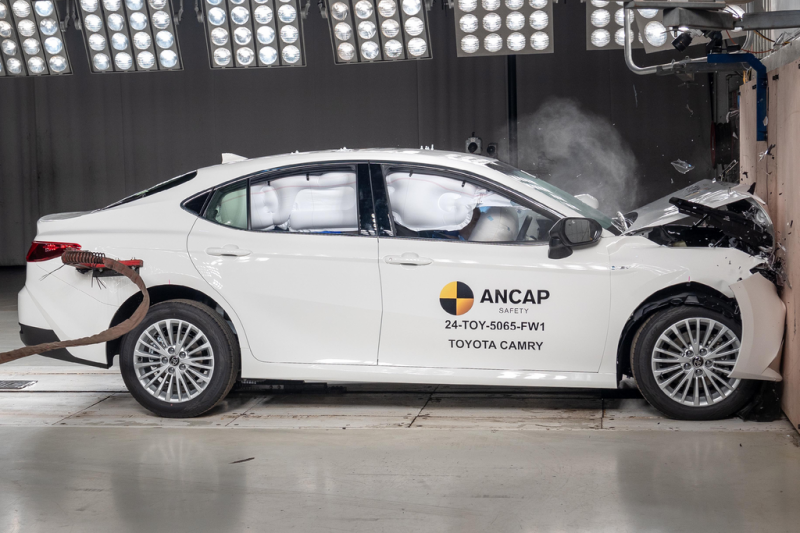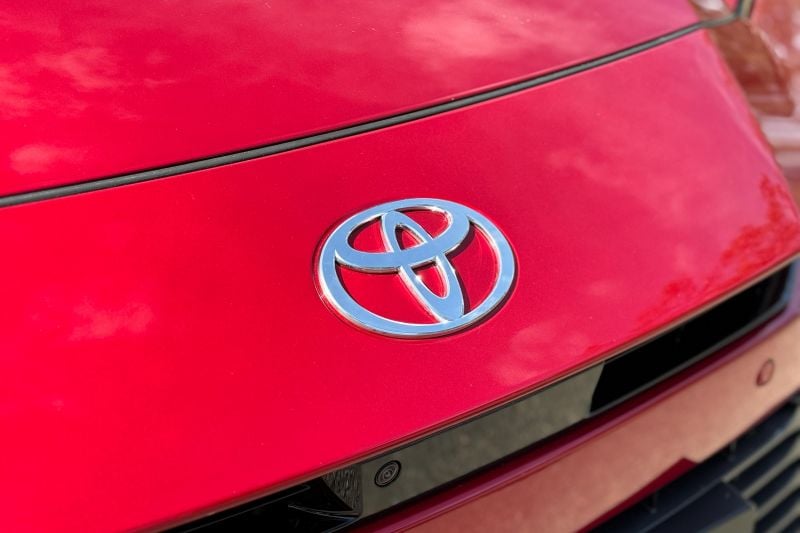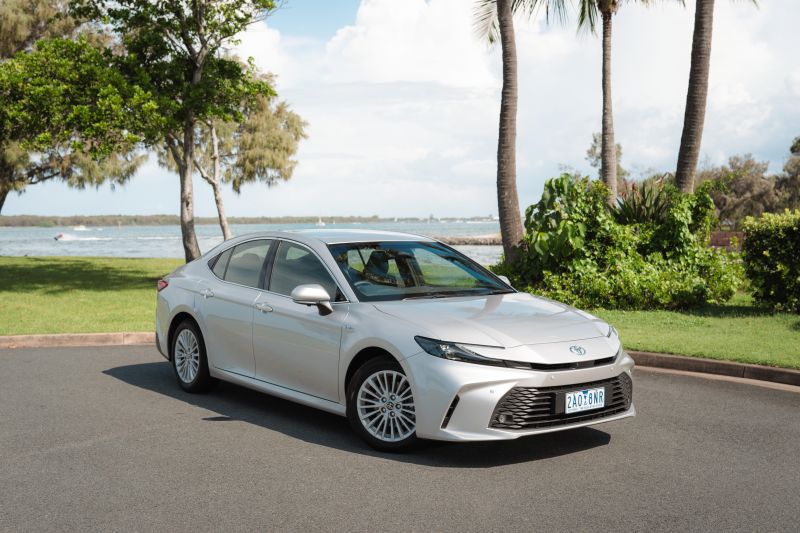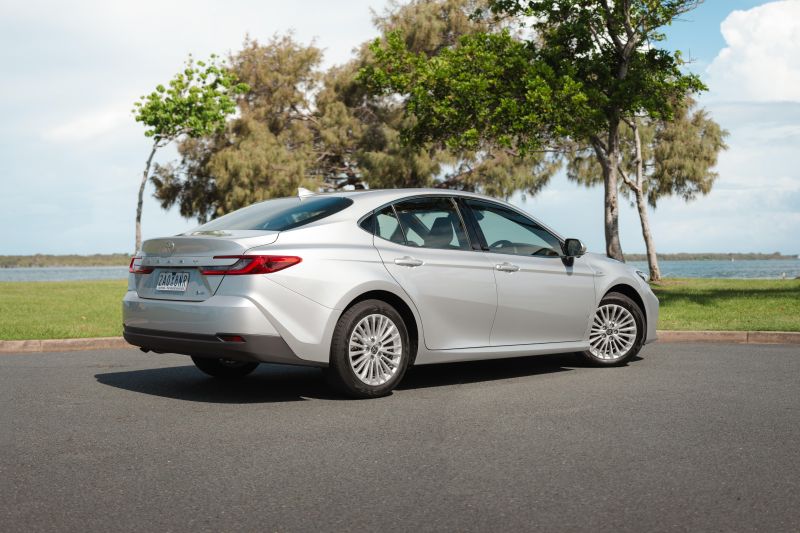The new-generation Toyota Camry’s reputation preceded itself in our office.
I’d already heard so many glowing descriptions of the new hybrid-only sedan from colleagues, so upon picking up this mid-range Ascent Sport it carried the weight of all these expectations.
The good news? The new Camry lives up to the hype. This is a thoroughly impressive sedan and somehow, perversely, a Camry – yes, a Camry – has become interesting in a world increasingly dominated by SUVs and electric vehicles.
Sedans this size were once so popular as family vehicles, but the market has well and truly shifted to SUVs. Last year, only around 27 per cent of Camry sedans delivered in Australia went to private buyers.
Especially in Queensland, if you see a previous-generation Camry it’s more likely than not an Uber or a police car. That may turn off private buyers, but I’d urge you to look past that and appreciate the new Camry for what it is – a damn fine car.
WATCH: Paul’s video review of the 2025 Toyota Camry Ascent Sport
It builds on the previous-generation model with Toyota’s latest-generation hybrid system, which makes it both more powerful and more efficient. The base four-cylinder petrol powertrain is dead because nobody really bought it, leaving a single hybrid powertrain across the three-strong lineup.
This isn’t a clean-sheet new model. The front- and rear-end styling is handsome but it’s clearly tacked onto a carryover body, with the roof and doors unmistakably reused from the previous-generation Camry.
It’s not going to win any beauty contests, and in Ascent Sport trim it looks like a pair of window stickers away from picking up partygoers on a Saturday night. But the real beauty is underneath…
How does the Toyota Camry compare?
View a detailed breakdown of the Toyota Camry against similarly sized vehicles.

Toyota
Camry
How much does the Toyota Camry Ascent Sport cost?
There’s no more sporty-looking SX in Australia, with the new-generation Camry offered in just Ascent, Ascent Sport and SL trims.
| Model | Price before on-road costs |
|---|---|
| 2025 Toyota Camry Ascent | $39,990 |
| 2025 Toyota Camry Ascent Sport | $42,990 |
| 2025 Toyota Camry SL | $53,990 |
To see how the Toyota Camry stacks up against its rivals, use our comparison tool
What is the Toyota Camry Ascent Sport like on the inside?
The new-generation Camry’s interior is a little more restrained than that of its predecessor, but it’s handsome, well-built and logically laid out.
There’s a more squared-off dashboard with a touchscreen that’s more neatly integrated. It’s also running Toyota’s latest generation of infotainment, a huge improvement on that in the old Camry with crisper and more modern graphics.
The surround-view camera resolution is also crisp, and there’s a handy transparent chassis view.
Unusually, the navigation also includes a weather map function that can show you rain, sleet and snow in your area.
Speaking of the weather, a voice from the car warned me three times about a high temperature alert in my local area. No dear, that’s just Brisbane.
The striated gloss black trim across the dash, ostensibly to give the passenger air vent a ‘hidden’ appearance, is a bit awkward. The cloth trim across the dash and doors, however, is distinctive and handsome.
We just wish you could get some of the colourways offered overseas. While all Camry cabins in Australia are boring black, in the US you can get light grey or even bright red cabins.
Attractive, comfortable cloth trim can also be found on the seats. There are some pretty mediocre cloth seats out there, as if to upsell buyers to more expensive models with leather-appointed cabins, but the Camry does cloth trim right.
There’s a 7.0-inch instrument cluster screen flanked by a pair of digital readouts for temperature and fuel level. If you want a full-width digital display, you’ll need to step up to the SL, but the Ascent Sport’s setup is legible and attractive.
The screen also has a graphical depiction of the vehicle, and will show you when the brake lights are activated. Neat!
The climate control array features lovely tactile buttons with a matte finish, though no knobs. Still, the setup works well; we also like the patterned metallic trim on the air vents.
The centre console is logically laid out. There are two cupholders, a tray, and a wireless charging pad ahead of three USB-C outlets, as well as a large centre console bin. We could do without the gloss black trim here though.
I don’t need to tell you about rear seat space. You can just wait until you get your next Uber and you’ll find out for yourself.
Just kidding. There’s ample legroom, while headroom is sufficient for someone 180cm tall. There are air vents, a pair of USB-C outlets, map pockets and a fold-down centre armrest with cupholders, while the driveline hump isn’t too big.
We also appreciate how the top halves of the doors are finished in soft-touch trim. Many brands, even luxury ones, will often cheap out in the rear and use hard, scratchy plastics.
There are three top-tether anchors for child seats, plus ISOFIX points for each outboard seat.
There’s 524L of boot space, perfect for an airport run, and you can expand the cargo space by dropping the 60:40 split/fold rear seats.
| Dimensions | Toyota Camry |
|---|---|
| Length | 4920mm |
| Width | 1840mm |
| Height | 1445mm |
| Wheelbase | 2825mm |
| Cargo capacity | 524L |
To see how the Toyota Camry stacks up against its rivals, use our comparison tool
What’s under the bonnet?
There’s now just one powertrain available in the Camry, with Toyota opting to make the mid-size sedan hybrid-only.
I knew the Toyota Camry would be efficient, but fuel consumption of 4.0L/100km on a drive from Brisbane to the Gold Coast and just 3.8L/100km on the way back was exceptional. Even a spirited drive through the mountains saw fuel consumption in the realm of 5.0L/100km.
It’s unclear how it ended up sitting at 5.9L/100km after a week of mixed-use driving, but I strongly suspect you’d be able to get a lower average consumption figure.
One downside with the Camry is you need to use 95-octane premium unleaded fuel. Then again, you won’t use much of it…
| Specifications | Toyota Camry |
|---|---|
| Engine | 2.5L 4cyl hybrid |
| Engine outputs | 138kW 221Nm |
| Electric motor outputs | 100kW 208Nm |
| System outputs | 170kW |
| Battery | 4.0Ah li-ion |
| Transmission | e-CVT |
| Drive type | Front-wheel drive |
| Weight | 1565kg |
| Fuel economy (claimed) | 4.0L/100km |
| Fuel economy (as tested) | 5.9L/100km |
| Fuel tank capacity | 50L |
| Fuel requirement | 95-octane premium unleaded |
| CO2 emissions | 91g/km |
| Emissions standard | Euro 6 |
| Braked tow capacity | 400kg |
To see how the Toyota Camry stacks up against its rivals, use our comparison tool
How does the Toyota Camry Ascent Sport drive?
So, the Camry is fuel-efficient. It’s also extremely refined and comfortable, too.
Toyota’s latest-generation hybrid system is superb, and the transition between petrol and electric power is seamless. There’s no unpleasant rev-flaring, and the e-CVT is smooth.
It really leans on electric power quite a bit. I’d have my foot on the accelerator and be travelling along at upwards of 60km/h and I’d see it was still in EV mode. Not only that, I’d also observe it going into EV mode at highway speeds.
Watching the energy flow meter is transfixing, as you can see energy recouped from braking being sent back to the battery and the petrol engine only firing up when you firmly prod the accelerator or you’re consistently travelling at higher speeds.
It’s also great how when you turn off the car, it’ll tell you not only what your fuel consumption was during your journey but also what percentage was driven on electric power.
Not only is it smooth, the powertrain is also responsive. You don’t need a heavy right foot to make the most out of this, and should you plant it you’re not greeted with wheelspin or a racket from the engine bay.
Indeed, you don’t have to contend with much noise at all. Not only is engine noise well-suppressed, but wind noise is virtually non-existent.
The only uncouth noise was an occasional rattle from somewhere in the cabin, and a small – and by no means excessive – amount of tyre roar on coarse-chip surfaces.
Then there’s the ride, which shows you don’t need adaptive dampers or air suspension or any trickery like that to have a truly smooth, plush ride.
Bumps and ruts are just shrugged off, and yet there’s no float to the ride. Body control is excellent, and the Camry settles quickly even over things like bridge joins.
-
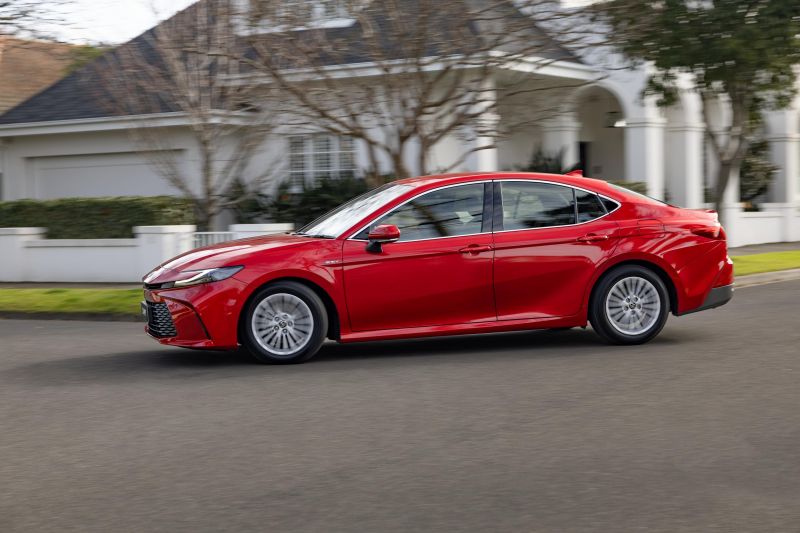
Ascent pictured
It proved comfortable over more poorly surfaced roads too, making the Camry an excellent road trip companion.
Toyota’s Lane Tracing Assist, a lane centring aid that works in conjunction with the adaptive cruise, generally works well though sometimes it’s a bit jerky.
We don’t love how auto hold has to be re-engaged each time you start the car, and sometimes we experienced a jolt when the car was in auto hold mode and we took off.
But enough about that. You want to know how the Camry handles on switchbacks and hairpin turns, don’t you?
No? Well, we tested it on some winding roads anyway.
-
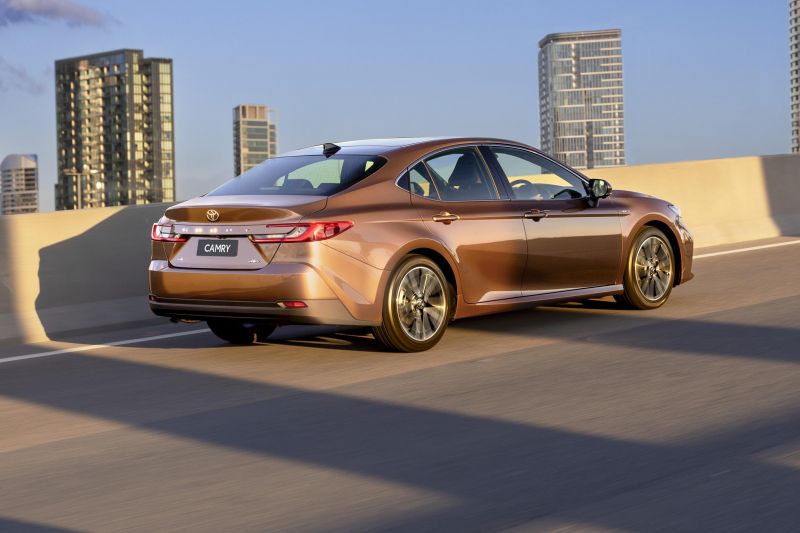
SL pictured
Under Akio Toyoda’s leadership, Toyota has had more focus on dynamics. This was evident in the previous-generation Camry, the first to use the TNGA-K platform, and it’s still evident in the new one.
Body roll is well-controlled, and the Camry stays nice and flat in the corners.
But while it’s technically proficient, we wouldn’t say it’s necessarily a fun steer. The steering is nicely weighted but doesn’t communicate much of what’s going on at the wheels, and it’s a bit overboosted at low speeds.
Overall, the Camry has neutral handling with safe understeer. Which sounds about exactly what a Camry should offer.
Would we love to see a hotter Camry, perhaps with GR badging? Sure, why not – Toyota has done a TRD one before. But as it stands this is competent, even capable, but if you want something sporty you’ll need to look at, say, a Hyundai Sonata N Line or Skoda Octavia RS.
To see how the Toyota Camry stacks up against its rivals, use our comparison tool
What do you get?
It’s disappointing you can’t get rain-sensing wipers in the Ascent Sport, but unless you loathe cloth upholstery the mid-range Camry is very well-equipped. It’s definitely worth the $3000 more than the base Ascent.
2025 Toyota Camry Ascent equipment highlights:
- 17-inch alloy wheels
- LED headlights and tail-lights
- Automatic high-beam
- Power-folding exterior mirrors
- Black cloth interior trim
- Manual front seat adjustment
- 60:40 split/fold rear seats
- 7.0-inch instrument cluster screen
- 8.0-inch touchscreen infotainment system
- Wireless Apple CarPlay and Android Auto
- Satellite navigation
- DAB+ digital radio
- Dual-zone climate control
- Six-speaker sound system
- 5 x USB-C ports
Ascent Sport adds:
- High-grade LED headlights
- LED front fog lights
- 8-way power driver’s seat with power lumbar
- Leather-accented steering wheel and shifter
- Auto-dimming rear-view mirror
- Wireless phone charger
- 12.3-inch infotainment touchscreen
All Camrys also come with a year’s worth of Toyota Connected Services access, which allows you to remotely control vehicle features or access vehicle information via the myToyota Connect app. You can view a full breakdown of included services on the Toyota website.
To see how the Toyota Camry stacks up against its rivals, use our comparison tool
Is the Toyota Camry safe?
The Toyota Camry has a five-star safety rating from ANCAP, based on testing conducted in 2024.
| Category | Toyota Camry |
|---|---|
| Adult occupant protection | 95 per cent |
| Child occupant protection | 87 per cent |
| Vulnerable road user protection | 84 per cent |
| Safety assist | 81 per cent |
Standard safety equipment includes:
- Autonomous emergency braking
- Pedestrian, cyclist, motorcyclist, oncoming vehicle detection
- Intersection collision avoidance assist
- Emergency steering assist
- Wrong-pedal mitigation
- Adaptive cruise control
- Blind-spot monitoring
- Driver attention monitoring
- Lane-keep assist
- Lane centring
- Rear cross-traffic alert
- Safe exit assist
- Speed sign recognition
- Emergency vehicle stop
- Surround-view camera
- Front and rear parking sensors
- 8 airbags (front, front-side, front-centre, driver’s knee and full-length curtain)
To see how the Toyota Camry stacks up against its rivals, use our comparison tool
How much does the Toyota Camry cost to run?
Toyotas tend to be among the cheaper to service, and the Camry is no exception.
| Servicing and Warranty | Toyota Camry |
|---|---|
| Vehicle warranty | Five years, unlimited kilometres (private buyers) Five years, 160,000km (commercial buyers) |
| Battery warranty | 10 years, unlimited kilometres (private buyers) |
| Service intervals | 12 months or 15,000km |
| Capped-price servicing | Five years, $255 per service |
| Total capped-price service cost | $1275 |
To see how the Toyota Camry stacks up against its rivals, use our comparison tool
CarExpert’s Take on the Toyota Camry
So, after a week with the Camry, is it something I would want in my garage?
It’s probably the most dynamic Camry in the history of the nameplate, though there’s just a bit of driver engagement missing.
But with a ride this comfortable, a powertrain this smooth, and fuel economy this excellent, who cares?
It’s a spacious family sedan that won’t cost much to run, and as a bonus it won’t embarrass itself on a winding road. Not to mention, the refinement on offer here makes a Lexus ES seem like a pointless extravagance.
If you can, though, cough up the extra dough for the flagship SL. After all, you don’t want people getting in whenever you’re stopped in the street because they think you’re their Uber driver…
Interested in buying a Toyota Camry? Get in touch with one of CarExpert’s trusted dealers here
Click the images for the full gallery, with additional photography by Eliot Tsai
MORE: Everything Toyota Camry



